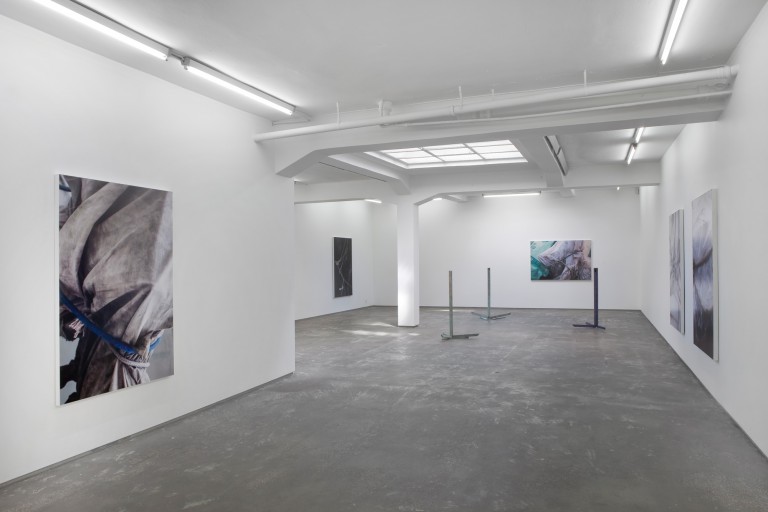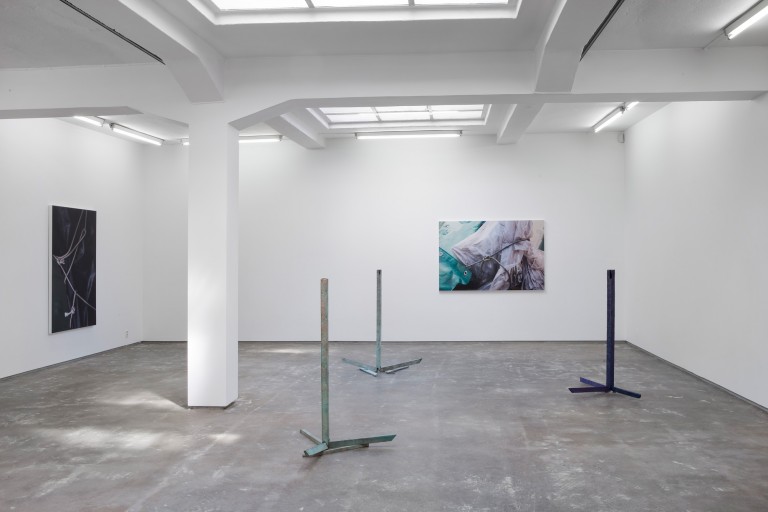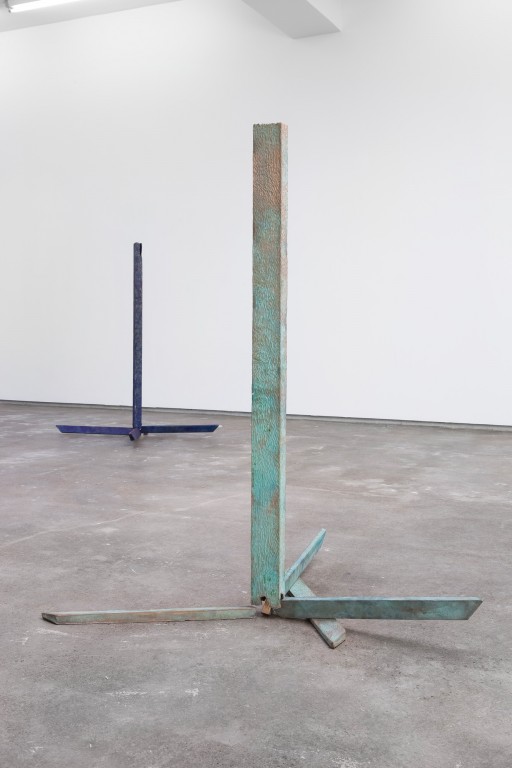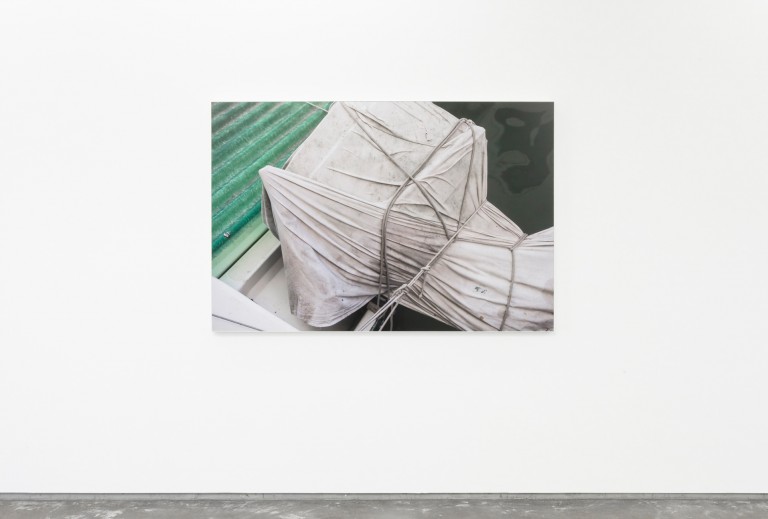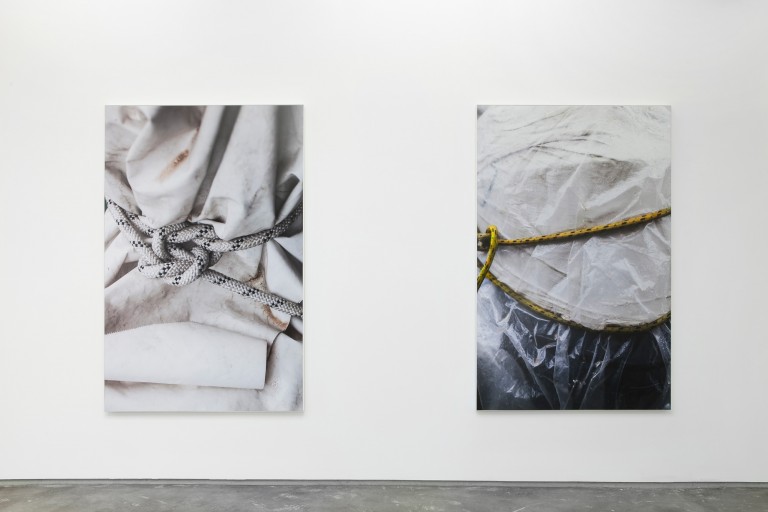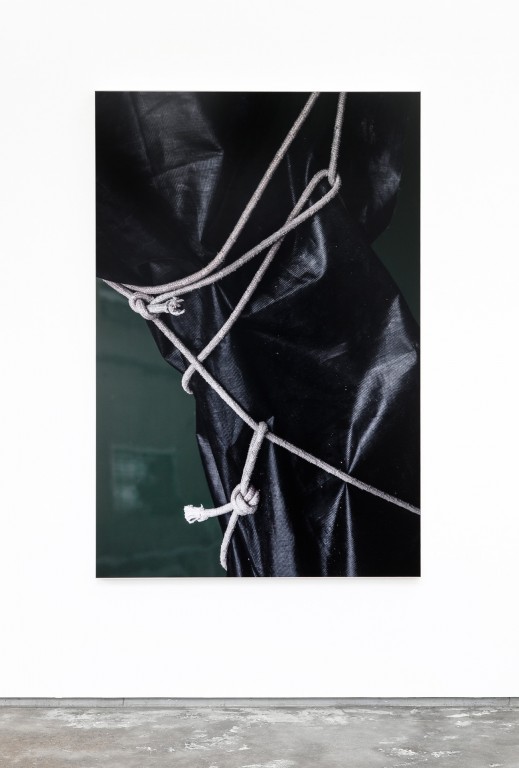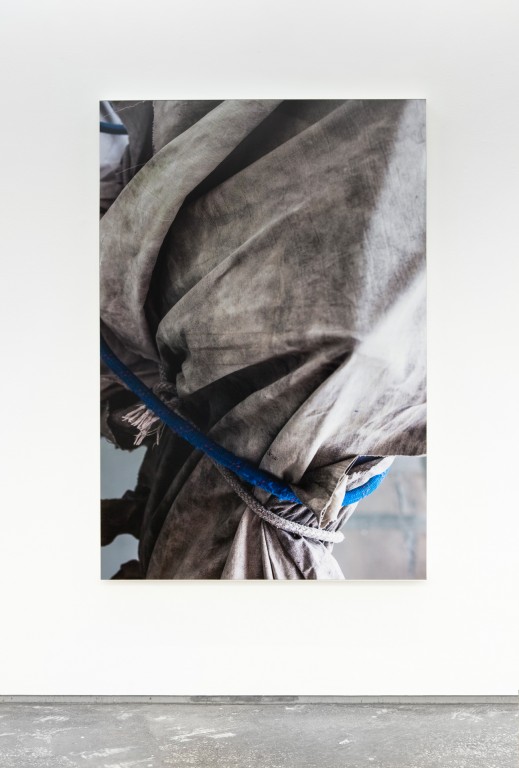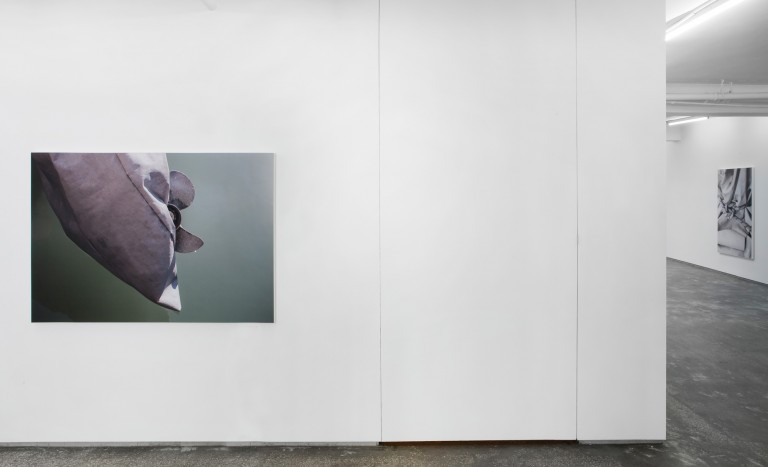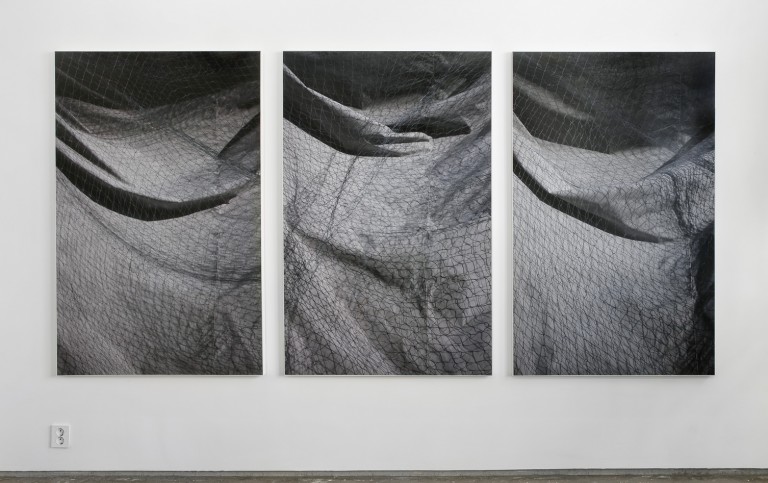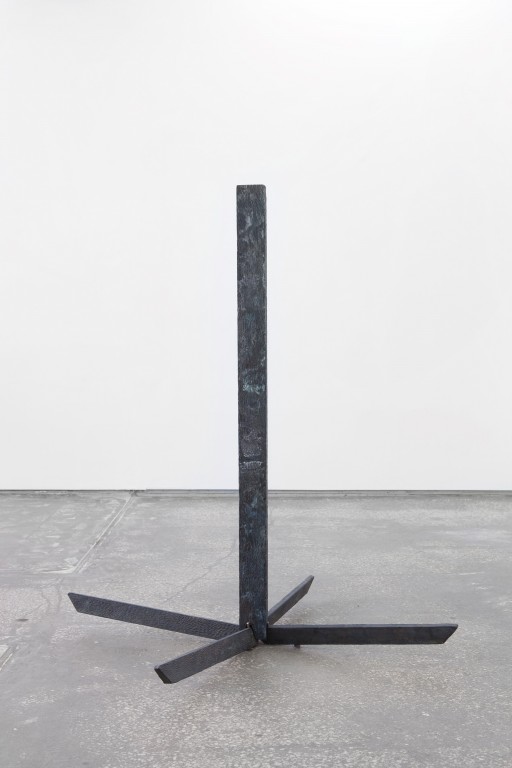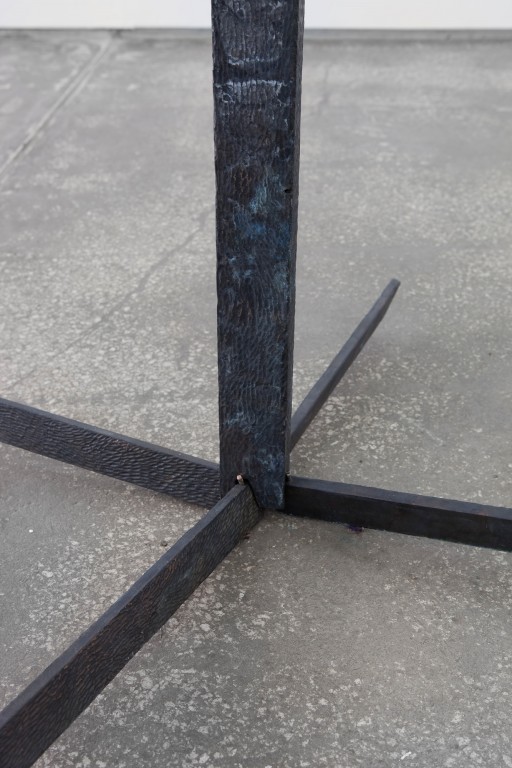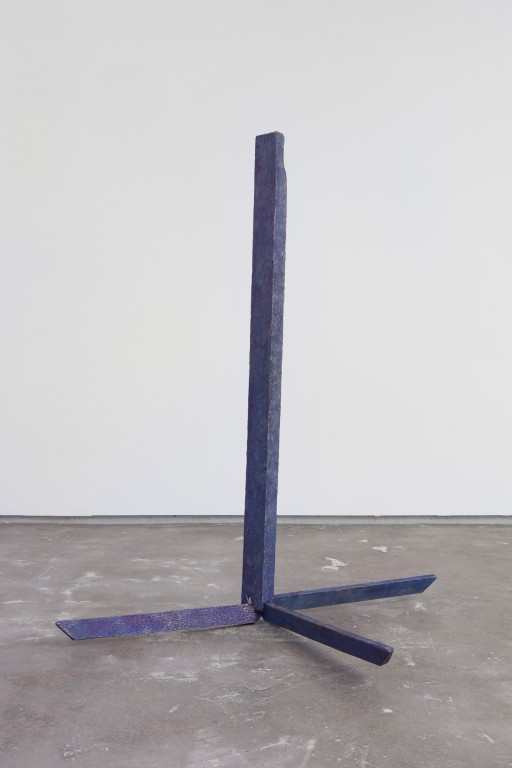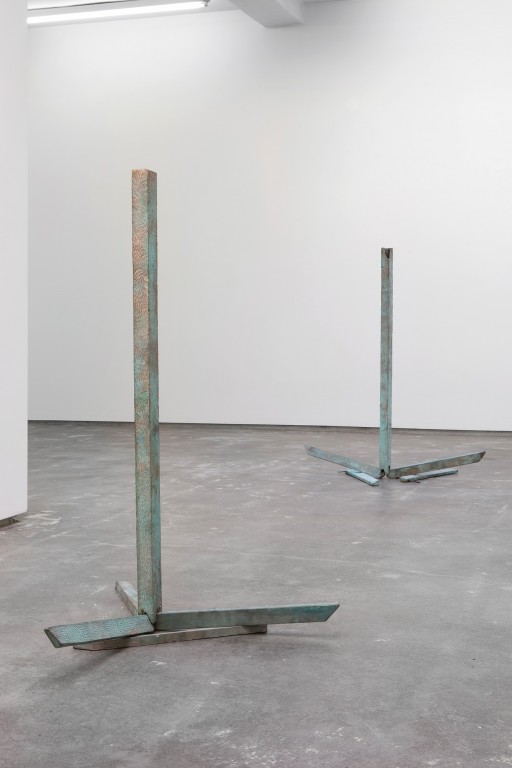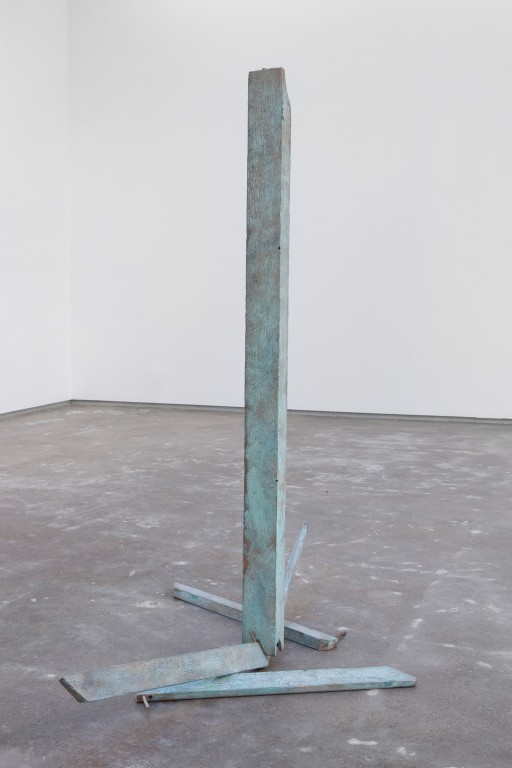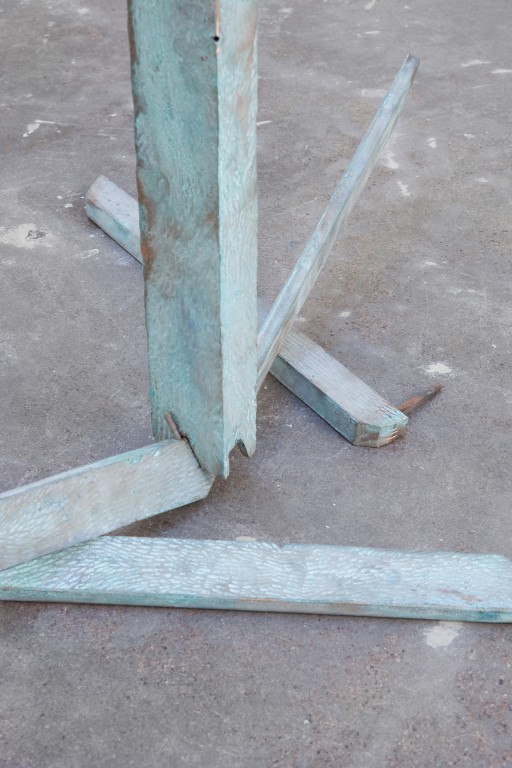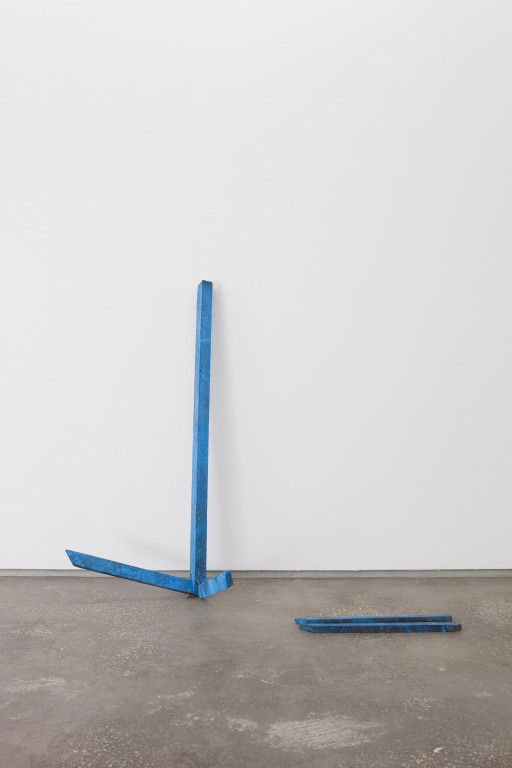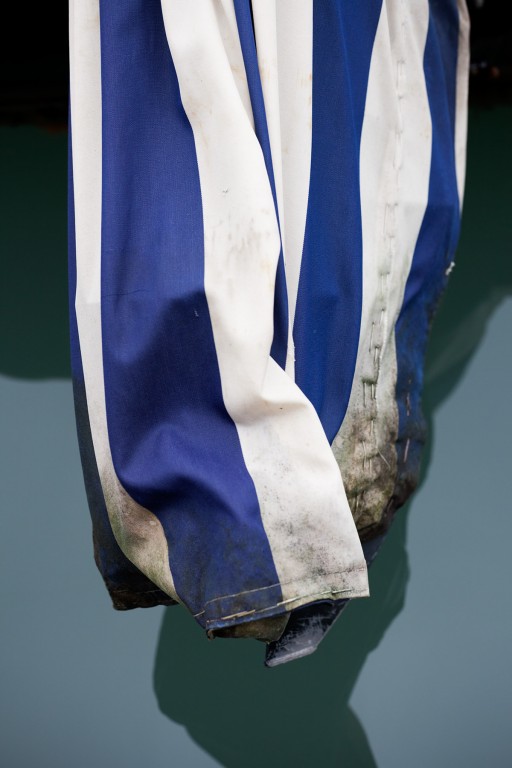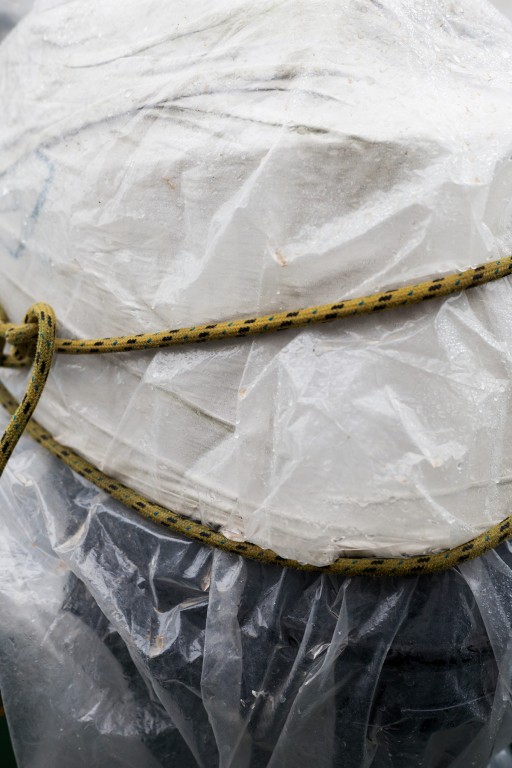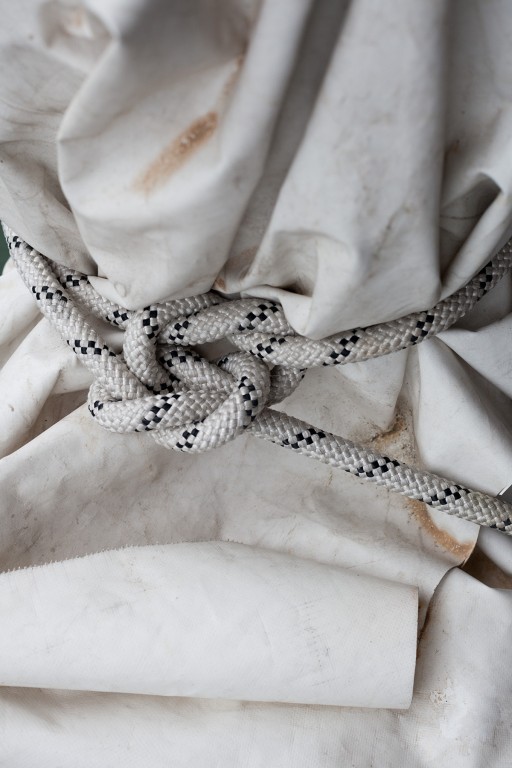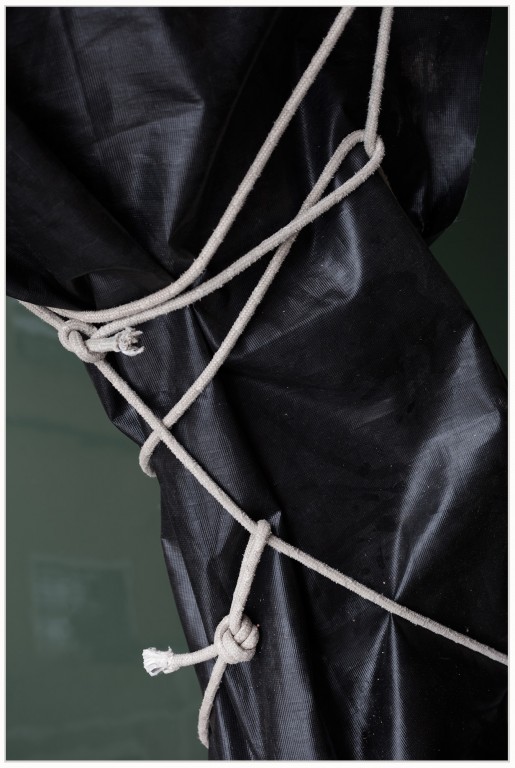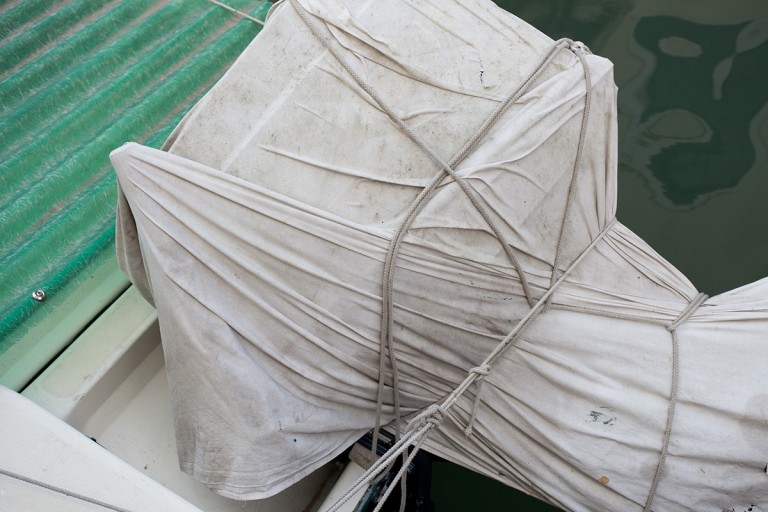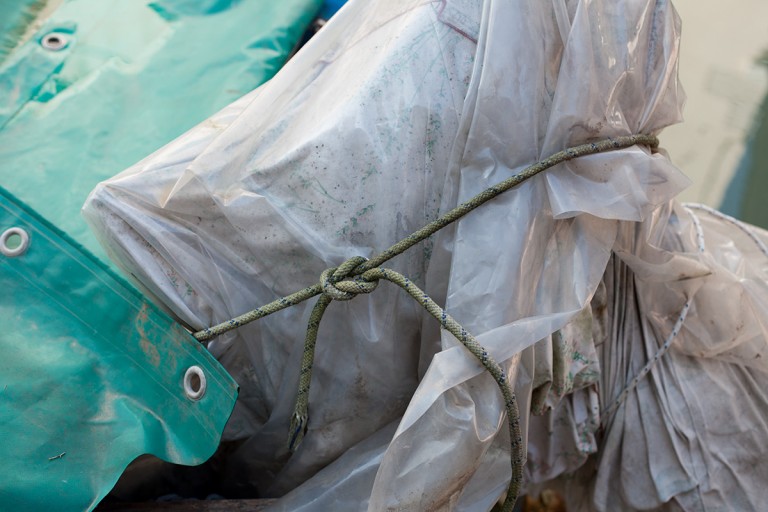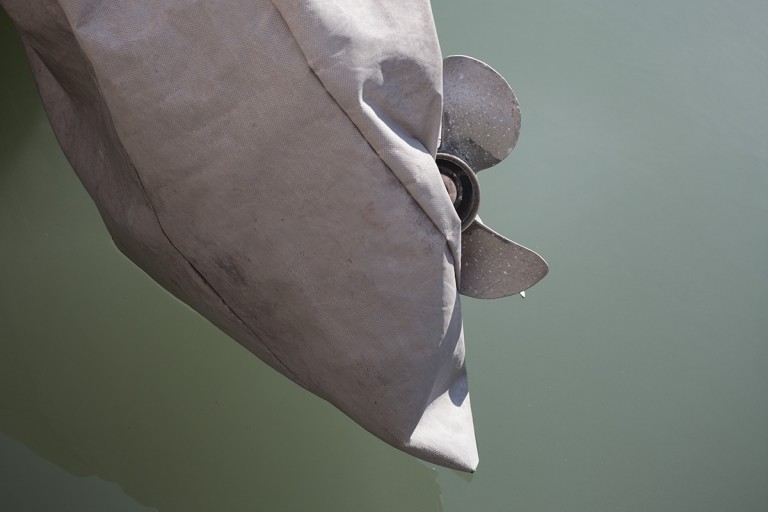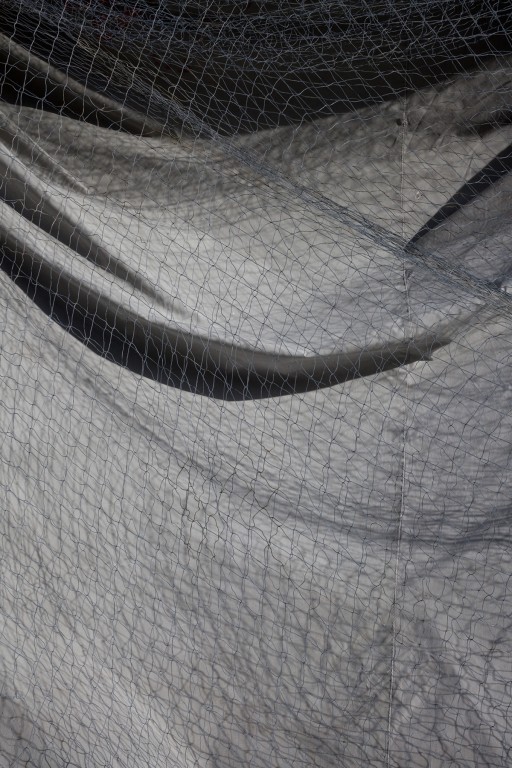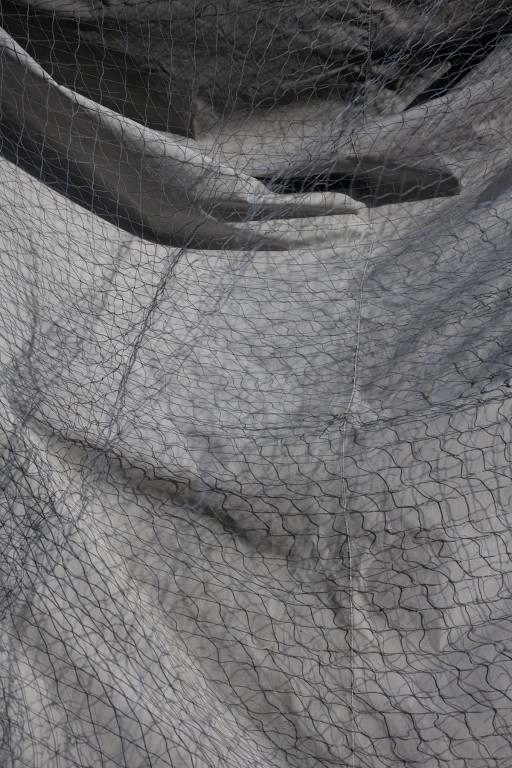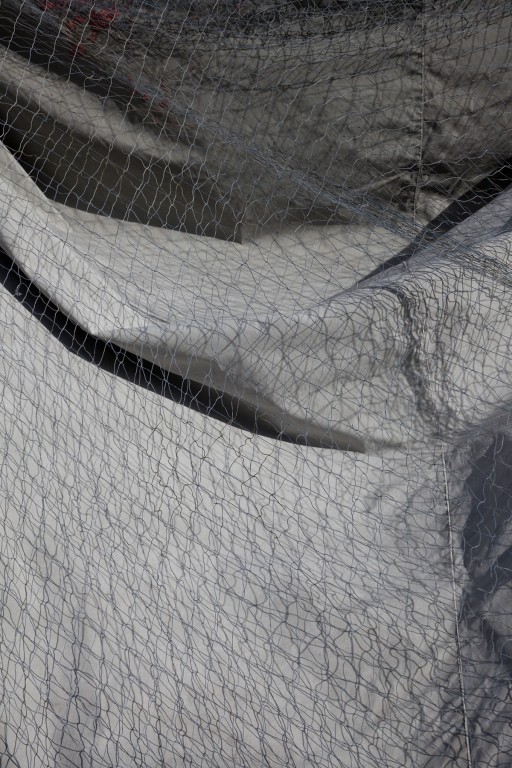OSL contemporary is proud to present the exhibition Bivouacked, featuring works by Tiril Hasselknippe and Bjarne Bare. The show comprises five patinated bronze anchors from Hasselknippe's sculptural project Sophanes (2014), and nine large format colour photographs of wrapped outboard boat motors from Bare's series Outboard Swaddle (2014). The works have previously been exhibited in solo exhibitions at Bevilacqua La Masa in Venice and Evelyn Yard in London respectively. It is the first time the artists are presented in the gallery.
The term "bivouac" refers to a temporary encampment like an improvised shelter or observation post. Though often used in a military sense it could in principle describe any type of impermanent dwelling place, and in the exhibition-context the term seems to take on connotations at a number of levels. While an explicit reference to the items exhibited - to anchoring or covering up - or to the objects temporary placement in the gallery, less substantial associations may go to the nomadic life of art works in general, as they are constantly travelling historical and geographical landscapes that temporarily tint their existence. However, this condition applies also to the working conditions of the contemporary artist, who, navigating events, references, sites, concepts and relations, finds locations from which to abstract and sublimate these impressions. Even the audience’s position is implied in the term, momentarily contemplating the constructed constellation that makes up a gallery exhibition. Stretching such a line of thought one is, in essence, reminded of the fleeting, fragile substance of the concept "contemporary".
The artists presented in this show differ both in method and point of departure. While Hasselknippe's work often springs poetically and associatively from the accidental encounter or personal anecdote, Bare works in an observational, documentary and analytic tradition, abstracting essence from that which is seen. None the less, as all artistic output, both of their individual projects share the condition that they are observations made from very specific temporary and angled positions.
Hasselknippe's anchors appear ambiguous both structurally and visually. Surface imprints of the wooden originals obscure the heaviness of the bronze casts; and though the strikingly coloured pigments of Prussian blue and turquoise are reminiscent of an oceanic pallet, these colours would quickly erode at sea. Furthermore the individual parts of each anchor are but loosely fastened together, and their unity is constantly threatened by collapse. The name Sophanes refers to the little known Greek hero, who according to classic texts fought with an anchor chained to his armour. The sources may be interpreted to mean either that Sophanes used the anchor as a weapon; or that he anchored himself to the ground. To keep his footing - to prove his intention of fighting to the end - to signal his assurance of victory? The incomplete picture may invoke thoughts of bravery, strength and firmness, or of potential danger, violence or vulnerability. As in most of Hasselknippe’s projects, the sculptures are accompanied by a textual work combining her own and "found" words in a lyrical stream of consciousness. Space, matter, words and allusions come together in a subjective narrative that balance the physical reality of objects in space against the fluctuating imaginations of the mind.
By contrast,- Bare's photographs isolate rather than assemble. His series Outboard Swaddle (Studies from Venice) is the result of a OCA- residency at Fondazione Bevilacqua La Masa in Venice, Italy, and presents an analysis of the city's aesthetic identity through the lens of a rarely exposed local custom of adornment. Celebrated for its picturesque magnificence, every year Venice attracts some 12 million visiting tourists expecting to be transported to a foregone world. As such the city's financial survival depends upon accommodating for modern practical requirements while maintaining its aging beauty. Among many visual wonders, the canals are perhaps the foremost symbol of Venetian imagery, however the modern outboard motor boats bearing the town’s infrastructure have no place in this popularized vision. What Bare presents is the curious commonplace custom of covering their machines up with protective sheeting, as if attempting to conceal the "unheimllich" force of an intrinsically modern mechanical component. The photographs show a series of camouflaged objects that tell of lost "innocence" and highlight the paradox of what we might call "nostalgic modernity". While the images capture the somewhat sad/ dark irony of the disguise, they also portray an unassuming and melancholic beauty that bears visual reference to the drapery of antique sculpture or bandaged mummies, as well as to the hooded convict, the charged power play of veiling and bondage, or the de-symbolizing masquerade of a Christo-cover up.
Tiril Hasselknippe (b. 1984, Arendal) lives and works in Oslo. Between 2008 and 2013 Hasselknippe studied at Malmö Art Academy, Sweden, interrupted by one year at the Cooper Union School of Art in New York (2010). During her period in Malmö she established and directed CEO Gallery. Recent solo presentations includes DREI gallery, Cologne (2015); Evelyn Yard, London Grünerløkka Kunsthall, Oslo; Vestfossen Kunstlaboratorium, Vestfossen, Norway (all 2014), Peinture et Sculpture and Toves Gallery (both Copenhagen); Club Midnight, Berlin (all 2013) and CA Projects, Los Angeles (2011). The artist has also contributed to group shows at “NN-A NN-A NN-A – New Norwegian Abstraction” at the Astrup Fearnley Museum, Oslo (2015; the Sculpture Triennial 14, Odense; Bond Street Bar, London and KM Temporaer, Berlin (all 2014); Malmö Konsthall and Lund Konsthall (both 2013), and Oslo Kunstforening (2012. Upcoming exhibitions includes Hydrogenfabrikken Kunsthall, Fredrikstad in june 2015 and Bianca D’Alessandro, Copenhagen in September 2015. She will also be curating a group show at the gallery space DREI in Cologne, upcoming June.
Bjarne Bare (b. 1985, Poznan) lives and works in Oslo. Bare obtained his BFA from the Academy of Fine Art Oslo in 2013, and will attend the MFA program at UCLA as of the upcoming school year, specializing in photography. He is the founder of Cornerkiosk press, and a co-founder and director of the artist-run gallery MELK in Oslo, focusing on contemporary photography. He is currently editing a new publication on new Scandinavian photography for Black Dog Publishing. During his BFA, Bare and three fellow students were invited to take part in the exhibition project MoDERNISM MACHINE at Henie Onstad Kunstsenter, Oslo 2012. Recent solo exhibitions includes The Pineappleweed, Kunstparken, Risør, 2015; and Outboard Swaddle, Fondazione Bevilacqua La Masa, Palazzetto Tito, Venice 2014. His works and publications have been presented in venues such as: the Henie Onstad Kunstsenter, Oslo; Gallery Zuiderkerk, Amsterdam; Belfast Exposed, Belfast; miau miau estudio, Buenos Aires; TJ Boulting, London, and Kunstnernes Hus, Oslo.

